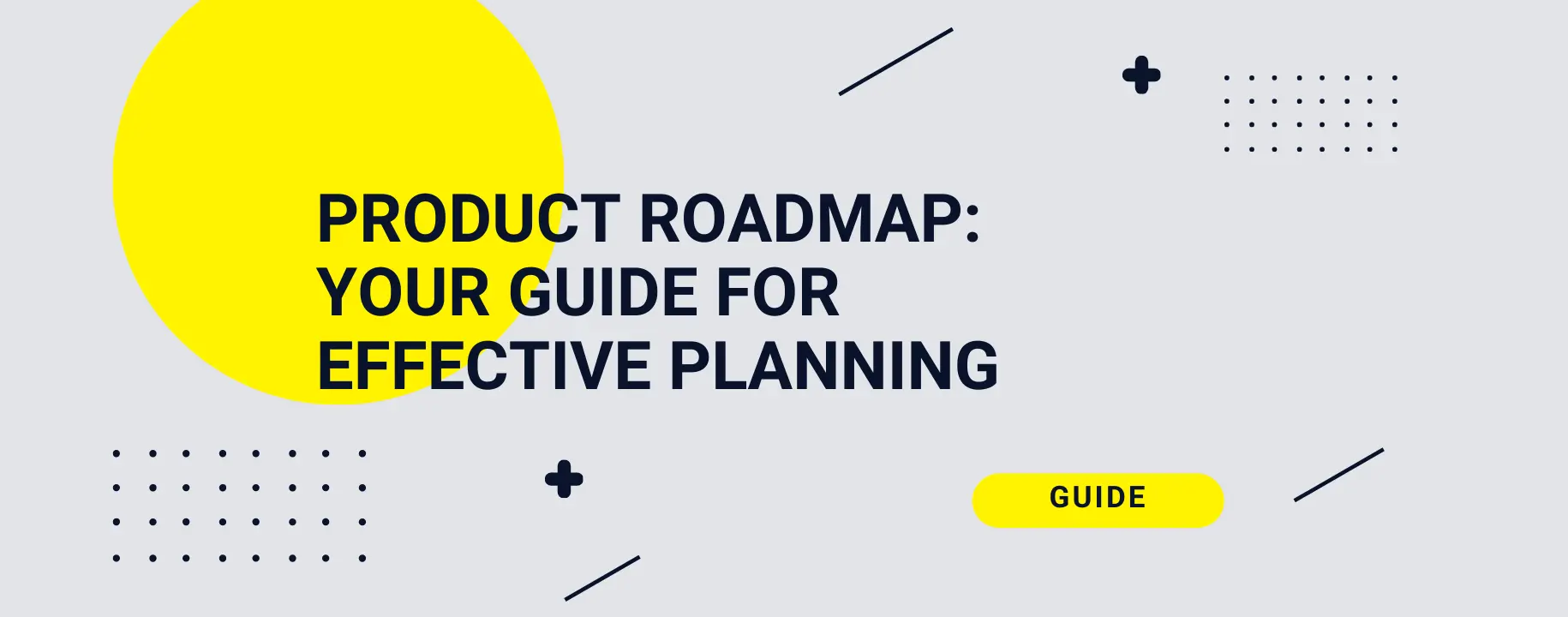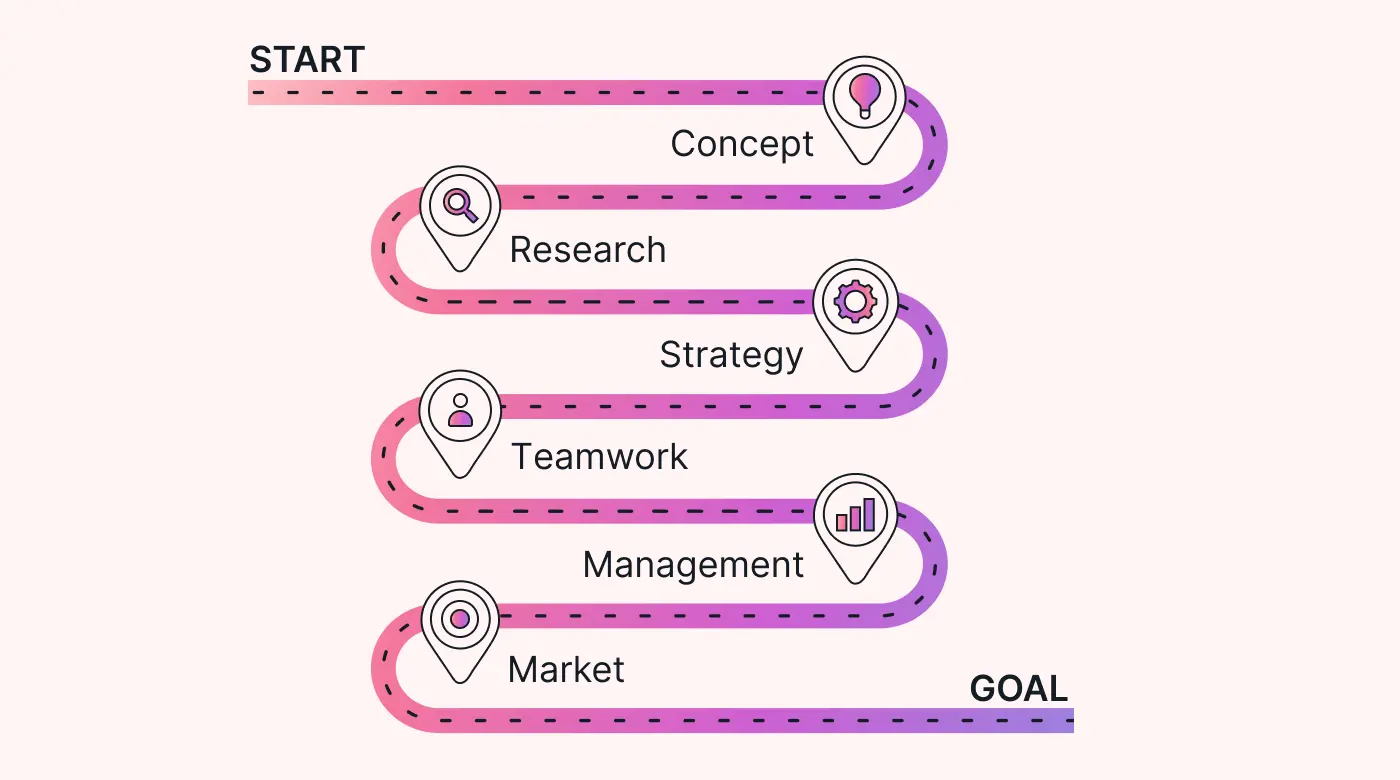- Industry insights
- Product development
- 7 May 2024
Product Roadmap Guide: What is it & how you handle it with your software provider
Product road map

Table of contents
- Product roadmap
- Why is the project roadmap important for a software product?
- How to build a roadmap for a project?
- Who is in charge of your product development roadmap when working with a software provider?
- Best practices for the best roadmaps
- The difference between product management and project roadmap
Contributors

Product roadmap
This is what you have to know: a product roadmap is essential for the life cycle of a product. It’s not just a plan; it’s your strategic guide to turning innovative ideas into reality.
Imagine you have a groundbreaking product concept.
The product roadmap is your detailed strategy, outlining key milestones, timelines, and objectives. It’s your blueprint for success, ensuring everyone on the team is aligned and working towards the same goals. Also, a product software roadmap is dynamic.
It evolves based on feedback, market changes, and new insights. This flexibility allows you to pivot and adapt, keeping your project on track even when circumstances change.
 Source: https://www.usemotion.com/blog/product-roadmap-example
Source: https://www.usemotion.com/blog/product-roadmap-example
Why is the project roadmap important for a software product?
Project roadmaps are essential for software products as they provide a clear vision, aligning the entire team on goals and priorities.
They enhance communication, ensure efficient resource management, and allow for timely adjustments based on feedback and market changes.
Essentially, they are the strategic guide that keeps your project focused, agile, and on track to success.
How to build a roadmap for a project?
To build a roadmap, it takes planning, collaboration, and flexibility. Here’s a simple guide to get you started:
- Define your goals: start by clarifying what you want to achieve with your product.
- Know your audience: who are your users, and what do they need? Collect feedback from them.
- Outline key features: identify the core features your product needs to achieve its goals.
- Set milestones: break down your roadmap into manageable chunks with clear milestones. These could be feature releases, product launches, or other significant achievements.
- Estimate timeframes: estimate how long each milestone will take to complete.
- Allocate resources: determine what resources you’ll need – whether it’s time, budget, or manpower.
- Stay flexible: remember, a roadmap is not set in stone. Be prepared to adjust it based on feedback, changes in priorities, or new market trends.
- Communicate and collaborate: share your roadmap with stakeholders, team members, and anyone else involved in the project.
- Review and iterate: regularly review your roadmap to track progress and make adjustments as needed.
- Celebrate success: don’t forget to celebrate when you reach milestones along the way. It’s a great way to keep morale high and motivate your team for the journey ahead.
 Source: https://www.usemotion.com/blog/product-roadmap-example
Source: https://www.usemotion.com/blog/product-roadmap-example
Who is in charge of your product development roadmap when working with a software provider?
When working with a software provider, the product development roadmap is like the blueprint for your project.
It’s overseen by a product manager or owner, who ensures everything stays on track. They’re the ones calling the shots, prioritising tasks, and making sure your goals are met.
So, when it comes to steering your project in the right direction, they’re the ones with their hands on the wheel.
Best practices for the best roadmaps
Here are some simple top tips for creating a great roadmap for your team.
- Simplify the details in your communication for your audience’s sake.
- Balance your roadmap between short-term actions and their connection to long-term objectives.
- Regularly review and adjust roadmaps when plans shift.
- Ensure everyone can access and regularly consult the roadmap.
- Maintain communication with stakeholders at all levels to keep everyone aligned.
The difference between product management and project roadmap
How about the difference between product management and a project roadmap? While product management focuses on the big picture and long-term strategy of a product, the project roadmap is all about the nitty-gritty details and short-term execution of specific tasks within a project. Let’s have a closer look:
Product Management
- Focuses on the overall strategy and direction of a product.
- Involves setting goals, defining features, and understanding user needs.
- Product managers oversee the entire lifecycle of a product, from conception to launch and beyond.
- They prioritise features based on value and impact, aiming to deliver long-term value to users and the business.
Project Roadmap
- Deals with the specific tasks and timelines involved in completing a project.
- It outlines the steps needed to achieve a particular goal or milestone.
- Project roadmaps are more tactical and detail-oriented, focusing on short-term execution rather than long-term strategy.
- They help teams stay organized, track progress, and ensure tasks are completed on time and within budget.
Latest blog posts
View all postsSaaS development vs. traditional software development: Key Differences

Diana
22 August 2024Digital product discovery process for product owners [Guide]

Diana
14 August 2024